Devolver / Massive Monster
When I first played Cult of the Lamb, launching August 11 on PC and all major console families, I imagined that its demonic tone originated as an internal joke for its development team. Perhaps the creators at Massive Monster sat around looking at the sim-management likes of Animal Crossing and The Sims, then thought that the only way they’d surpass those games is by striking a deal with the devil.
Then they went ahead and made a sim game where players do exactly that. After 90 minutes spent playing the game’s expanded demo, provided by its publishers at Devolver Digital, I’m inclined to think its choices about tone, art direction, and sim-meets-Satan gameplay were the right call. (There’s currently a free public demo as well, available on Windows and MacOS, but it’s much shorter than what I’ve sampled.)
The One Who Waits
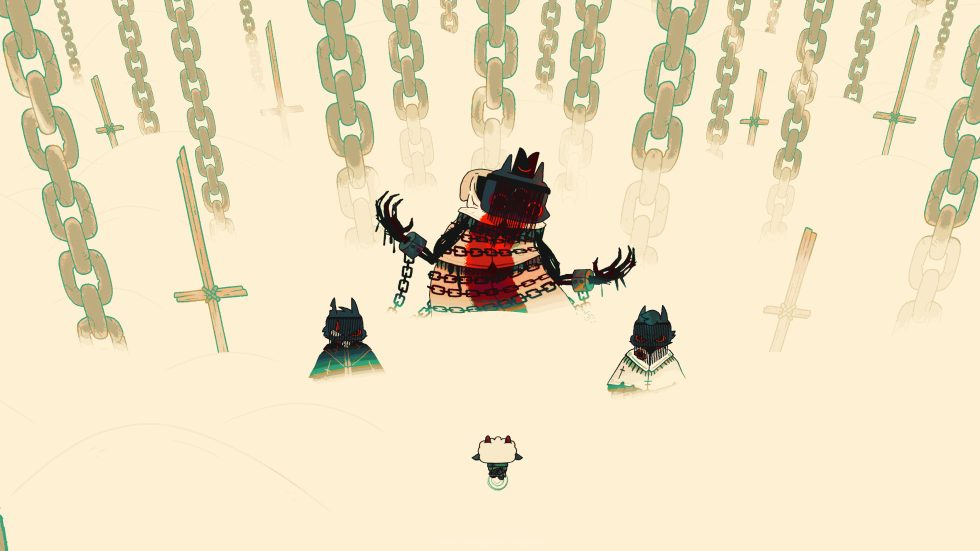
Devolver
Cult of the Lamb begins with the game’s hero, a Disney-like cartoon lamb, being led to its slaughter as a form of religious sacrifice. But death is only the beginning in this game. In the afterlife, you meet a mysterious underground beast wrapped in chains, simply named The One Who Waits. You’re given the option to rise from your grave, grow a cult full of devout followers, expand your mastery of the demonic arts, and defeat a series of monstrous rivals. You can answer this call in one of two responses: “yes” and “absolutely.”
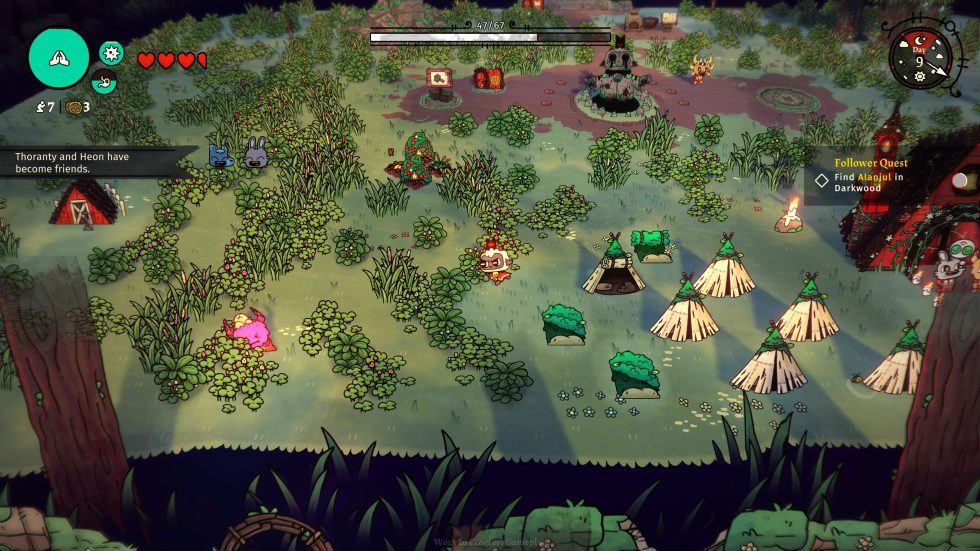
Devolver
After battling through a top-down, Zelda-like sequence and killing your prior captors, a guide with similar demonic inclinations teaches you how to find, free, and convert down-on-their-luck woodland creatures. The game’s formal loop begins with you assigning basic tasks to your sole follower on an expansive plain that your cult calls home: gather resources, build structures, tend farms, and so on. Once your follower is occupied, enter a gate that takes you to a randomly generated series of battling rooms, where you’ll make progress on your kill list, gather rarer resources, and find and conscript more easily influenced animals to join your cult.
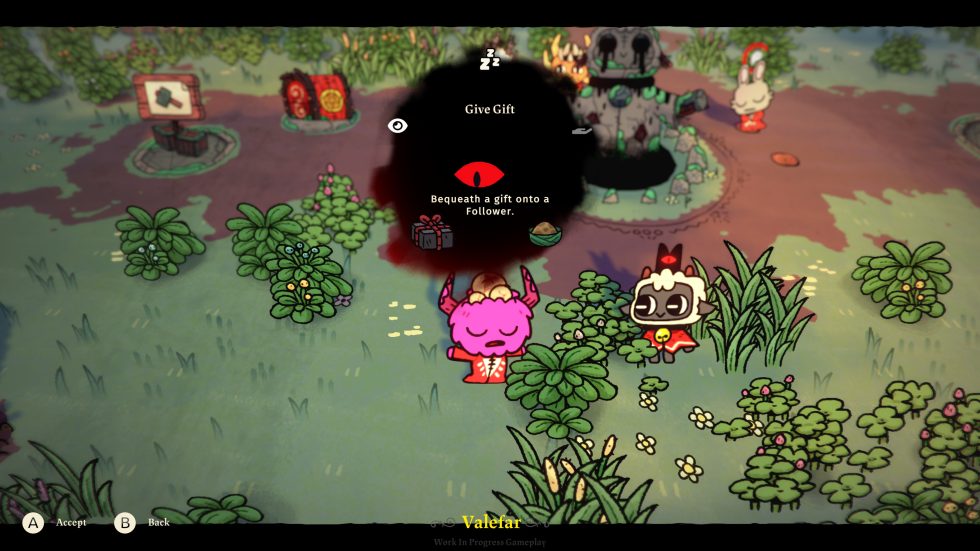
Devolver
Bring them back to the village, and that’s when you begin the game’s leader-of-a-cult cosplay in earnest.
Everything you need to become more powerful revolves around maintaining your cultists’ faith and loyalty; the former can be exploited and drained from each cultist like an ectoplasm of sorts, while the latter sticks around as more of a permanent “experience point” meter. The time between demon-hunting battles can be spent conducting faith-draining services, spending individual time with cultists to make them happier, or learning about and resolving side quests that they ask about.
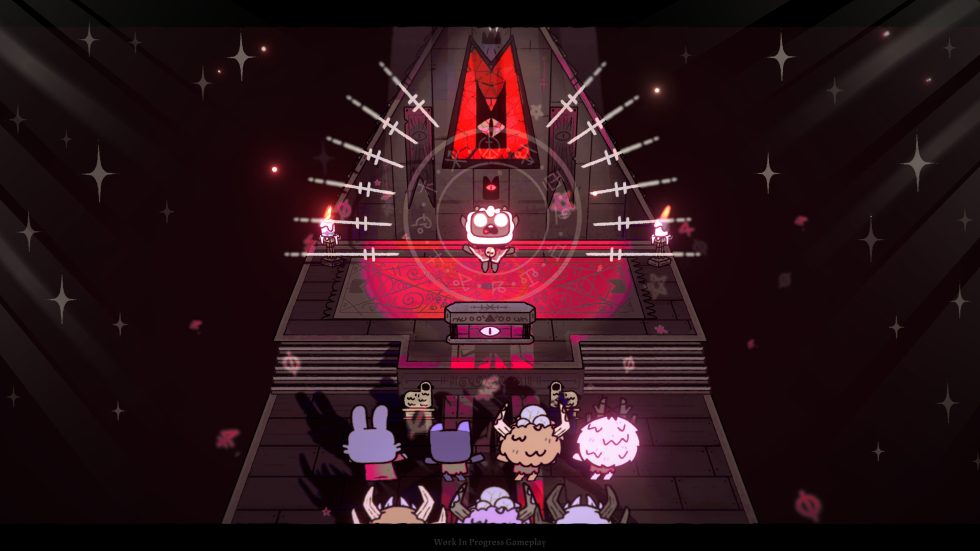
Devolver
That’s one way to save on resources
Unlike run-of-the-mill RPGs, however, you have an option outside of being helpful. Maybe you don’t care about certain cultists, or maybe you missed the timing window to help them resolve issues like starvation, disease, or losing faith. (The longer you’re out adventuring and battling, the more adrift certain followers may become back at the cult farm, as indicated by an always-running day-night cycle.)
Early in the game’s skill-tree system, cult leaders learn that they have the option to outright sacrifice their followers, which can bestow rare rewards on your cult. This might cost some of the admiration of your other followers, but from what I can tell, savvy cult leaders can still balance their emotional needs while feeding their lust for blood and power.
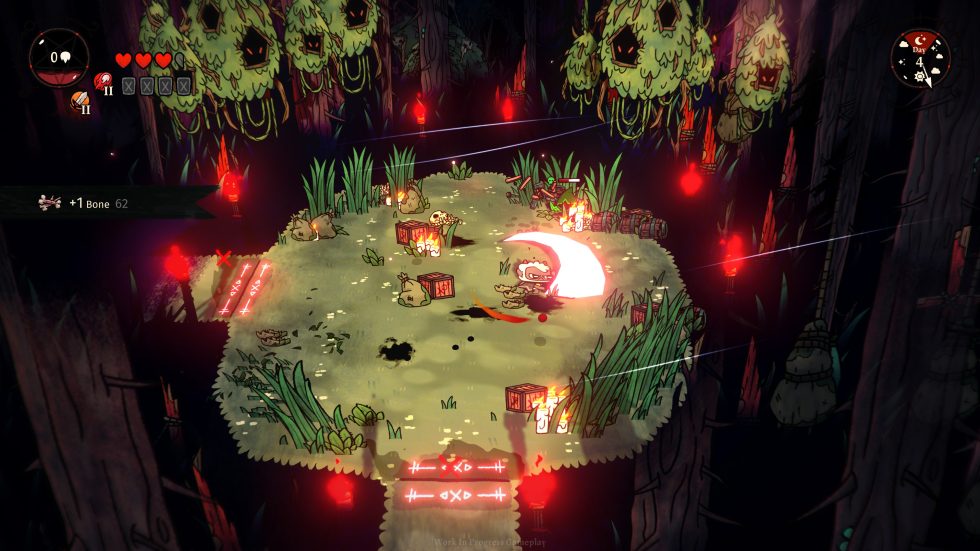
Devolver
Cult of the Lamb could very well have invented a half-battling, half-sim ecosystem that sounds a lot simpler or drier, and without the Satanic overtones, the game very much resembles the 1991 SNES classic Actraiser. The devs, artists, and writers at Massive Monster deserve credit for making this game fun to talk about, look at, and ponder; its systems of cult management lean in to brutality in ways that make logical sense yet add mechanical fun to the question of how players might move forward as cult leaders. One of the game’s skill trees asks a brutal question early on: Would you rather build beds for your followers or develop the ingenuity to build disease-reducing graves, instead? At first, you can’t have both. Decisions, decisions.
The included dice game isn’t that much more complex than Yahtzee, but I got a kick out of its twist on how players contend with randomly rolled dice.
Some fish cannot be caught via the fishing mini-game. Thus, to complete a certain mini-quest, you’ll have to use this tarot card while out in an encounter—which will add spice to tough encounters, since selecting this card will prevent you from choosing some of your useful battle-specific cards.
But this game does more than merely lift another decades-old game’s mechanics. While its randomly generated battling levels clearly draw inspiration from Binding of Isaac, Cult of the Lamb‘s upgrade system requires careful curation of the cult’s farm region, in terms of resource management, skill-tree decisions, and even side quests to unlock more “Tarot cards” (which are shuffled and randomly dealt during battling encounters to increase your chances of survival). A series of unlockable village outposts near your cult add everything from amusing new characters to side quests to mini-games, including a clever tap-to-reel fishing mode and a tricky, surprisingly engaging spin on Yahtzee.